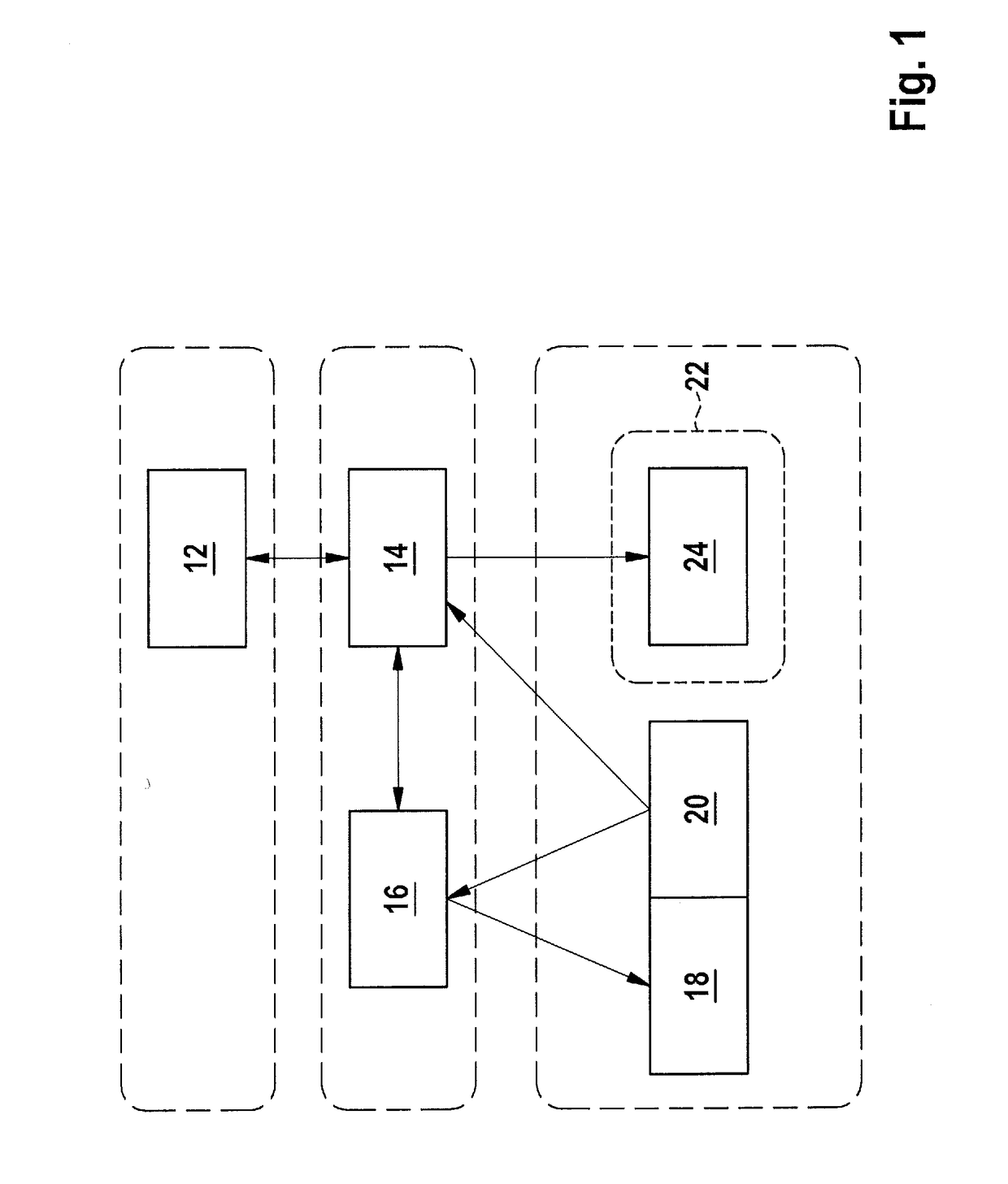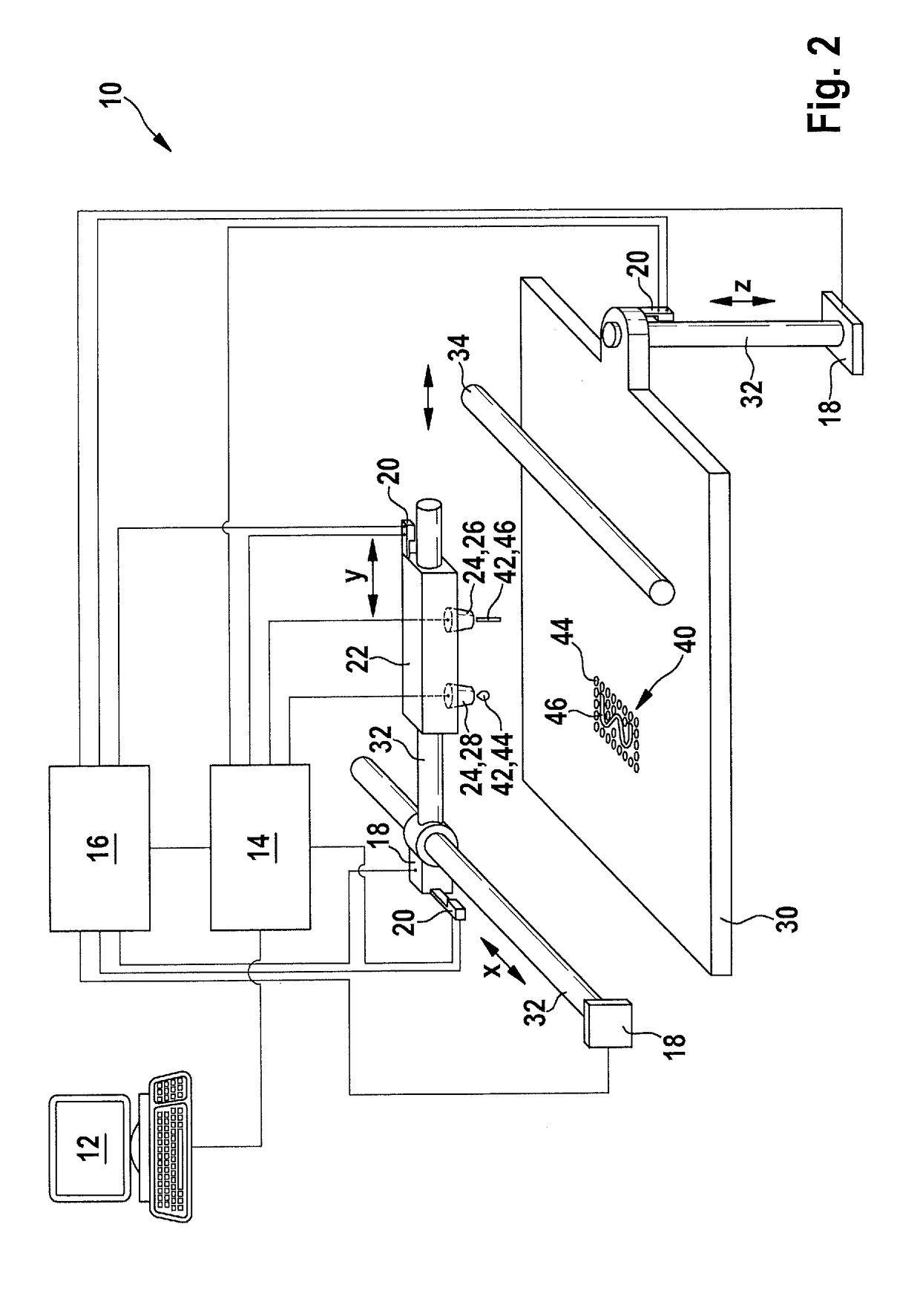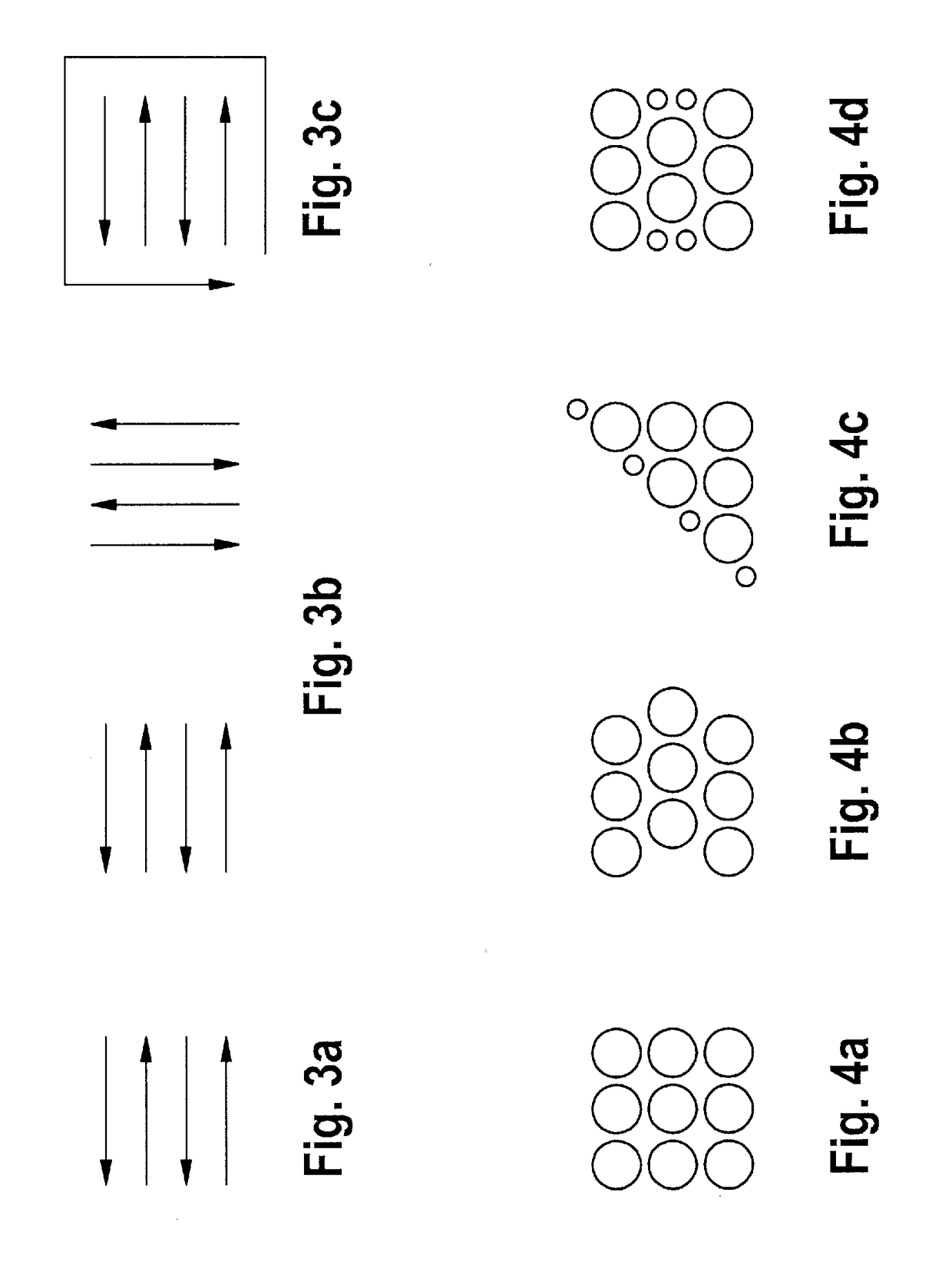Method and device for producing an object by using a 3D printing device
a 3d printing and object technology, applied in the direction of additive manufacturing with liquids, manufacturing tools, manufacturing processes, etc., can solve the problems of unsuitable moldings consisting of silicone elastomers, large crosslinking rate reduction, cloudiness,
- Summary
- Abstract
- Description
- Claims
- Application Information
AI Technical Summary
Benefits of technology
Problems solved by technology
Method used
Image
Examples
Embodiment Construction
[0019]More particularly, is the invention makes it possible to provide multiple discharge devices, including those that are technically different, for various print materials in the 3D printing device, and these are operated in such a way.
[0020]The 3D printing device comprises a baseplate on which the object is built up by discharge of print material from the at least one discharge device of the at least one printhead. The baseplate and the at least one printhead here are moved relative to one another, with relative movements being possible in all three spatial directions X, Y and Z. For this purpose, for example, the at least one printhead may be arranged such that it is movable in X and Y direction, and the baseplate can be arranged such that it is movable in Z direction. Further configurations are also conceivable here; for example, the baseplate may be arranged so as to be movable in Y direction and the at least one printhead may be arranged so as to be movable in X and Z direct...
PUM
| Property | Measurement | Unit |
|---|---|---|
| Flow rate | aaaaa | aaaaa |
| Area | aaaaa | aaaaa |
Abstract
Description
Claims
Application Information
 Login to View More
Login to View More - R&D
- Intellectual Property
- Life Sciences
- Materials
- Tech Scout
- Unparalleled Data Quality
- Higher Quality Content
- 60% Fewer Hallucinations
Browse by: Latest US Patents, China's latest patents, Technical Efficacy Thesaurus, Application Domain, Technology Topic, Popular Technical Reports.
© 2025 PatSnap. All rights reserved.Legal|Privacy policy|Modern Slavery Act Transparency Statement|Sitemap|About US| Contact US: help@patsnap.com



